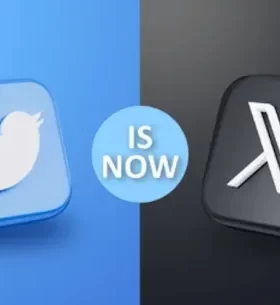How to Create a Thread on Twitter (X): A Step-by-Step Guide
Have you ever found yourself captivated by a string of tweets unraveling a fascinating story or insightful analysis? Well, in the digital age, where character limits can constrain our stories, Twitter threads can be our savior. Using a mixture of short and longer tweets, we can create a Twitter dialogue that’s not just engaging, but informative and impactful, too.
In this blog, we will discuss how creating threads can enhance your visibility and engagement on Twitter (now ‘X’). We will discuss a step-by-step guide for creating an effective thread on Twitter that will help boost your reach and visibility. So, let’s get started;
Table of Contents
What is a Twitter thread?
A Thread is created when someone replies to their own tweet with more information, like you can say, it’s an interconnected series of tweets. Threads can range from an informational series of tweets, to opinionated musings, to humors anecdotes. Threads can be used for:
- Narrating a story
- Explaining complex subjects
- Showing off your creativity
- Connecting different topics in one post.
In short, Twitter threads are an effective way to share stories in a concise format. Now, let’s discuss how to write thread on Twitter.
How to Write Thread on Twitter: A Step-by-Step Guide
- Log in to Your Twitter Account
- Go to Twitter.com (now x.com) and log in to your account.
- Compose Your First Tweet
- Compose your first tweet as you normally would, keeping it concise and engaging.
- Click on the “Add Another Tweet” Option
- After composing your first tweet, click on the “Add another Tweet” option below it.
- This allows you to continue your thread with additional tweets.
- Continue Writing Your Thread
- Compose your next tweet in the thread, building on the content of the previous tweet.
- You can share additional thoughts, images, videos, or links in each tweet.
- Use the Thread Indicator
- As you add more tweets to your thread, Twitter will automatically indicate that it’s part of a thread.
- You’ll see al line connecting the tweets, indicating they are related.
- Number Your Tweets (Optional)
- To make it clear that your tweets are part of a thread, consider numbering them.
- Preview Your Thread
- Before posting, you can preview how your thread will appear to your followers.
- Ensure that the tweets flow logically and cohesively.
- Click on the “Tweet All” Button
- Click on the “Tweet All” button to publish it.
- All the tweets in the thread will be posted simultaneously, creating a continuous narrative.
- Engage with Your Audience
- As users respond to your thread, engage with them by responding to comments and questions.
- Encourage interactions to keep the conversation going.
- Monitor and Promote Your Thread
- Monitor the performance of your tread using Twitter analytics.
- Promote your thread by retweeting it from your other social media accounts or websites.
- Consider Using Threads for Different Purposes
- Threads can be used for storytelling, explaining complex topics, sharing tips, or launching a discussion.
- Experiment with different thread formats to find what resonate best with your audience.
The Benefits of Thread Creation
Thread creation can be a powerful tool to engage audiences and increase visibility on Twitter. Here are some of the advantages to creating threads:
-
Increased visibility
Tweets that form part of a thread can benefit form more exposure, as followers may get notifications for every additional tweet in the conversation. Furthermore, followers can easily interact with an entire thread by simply replaying to one of its tweets.
-
Accessible content
Twitter threads allow you to share long-form content without overwhelming followers. By breaking up longer text into multiple concise tweets, it’s much easier for followers to quickly digest the content. Threads also make it easy to link related topics together in a natural and seamless way.
-
User engagement
Threads can be effective tools for sparking conversation with your audiences, as they provide an opportunity to pose questions or ask for feedback.
-
Grow your following
When your content is seen, and engaged with, it can help you to grow your Twitter followers. Many people are more likely to follow an account if they’ve already interested with them in some way – for example, responding or engaging with their tweets.
Thus, thread creation is a great way of sharing longer updates, creating conversations with potential customers, and increasing visibility and engagement for your brand on Twitter.
FAQ’s
Q: What is a Twitter thread?
A: A Twitter thread is a series of connected tweets on a single subject or idea, making it easy for followers to catch your drift without missing any key points.
Q: How many tweets in a thread?
A: You can include up to 25 tweets in a single thread. If you need more than 25 tweets for your message, consider breaking it down into multiple threads.
Q: What makes a good Twitter thread?
A: A good thread often starts with a captivating opener, followed by value-packed tweets that keep your readers hooked. A good Twitter thread must be engaging, informative, and relevant.
Q: What is the difference between tweet and thread?
A: A tweet is a short post of up to 4000 characters sent from one Twitter user to their followers. It can include an image, video, GIF, or link.
A thread is made up of many tweets strung together in order to communicate an idea or story. Threads are used by Twitter users when they have something longer to say than what can be conveyed in a single tweet.
Final words
And there you have it, a comprehensive guide t threading your thoughts on Twitter. Utilizes the power of this platform; use threads to build your narrative, whether it’s momentous story, an enlightening how-to, or a fascinating adds to the dynamic tapestry of global conversation. So, go ahead – unravel your string of thoughts, tweet by tweet. Good luck and thanks for reading!


